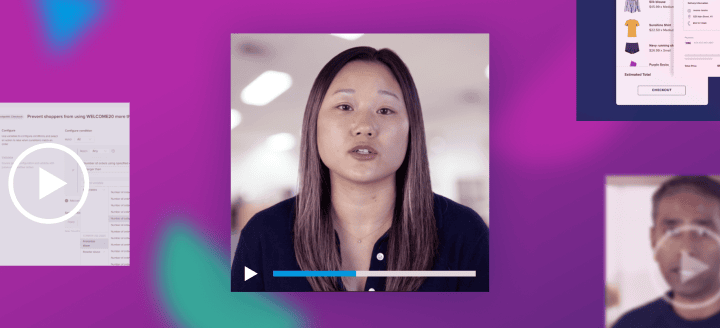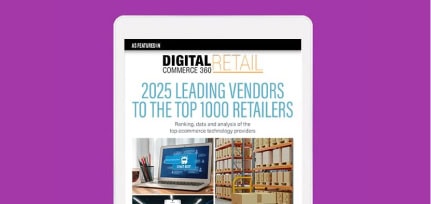Diving into the core of international ecommerce
Reviewed, revised and approved by Signifyd humans.
The FLOW panelists start things off by emphasizing the importance of comprehensively understanding a company’s internal operations before considering international expansion. This deep understanding helps identify potential areas for growth and the challenges that may arise in new markets. And before the session wraps up, they cover the following:
This FLOW Summit 2023 session brings together leading minds in the ecommerce space. Moderated by Sona Khagram, formerly a senior product marketing manager at Signifyd, the panel features Tara Mitchell, then at Wish, now Signfiyd’s senior director, chargebacks & abuse recoveries and Jason Macklin, vice president of payments at ESW. The discussion centers on the nuances and strategies pivotal for international expansion in ecommerce.
The build versus buy dilemma: A significant part of the conversation revolves around the ‘build versus buy’ dilemma faced by companies looking to expand internationally. Tara and Jason share insights from their experiences at Wish and ESW, respectively, illustrating how this decision can shape a company’s expansion strategy.
Emerging payment trends: Jason Macklin brings to light the evolving landscape of international payment trends. His insights include the nuances of different geographic regions and how adapting to local payment methods can be crucial for successful market penetration.
Challenges in new markets: The panelists discuss the various challenges companies face when entering new markets. These challenges range from cultural and linguistic differences to navigating regional regulations and consumer behaviors.
Future innovations and ecommerce strategies: Looking ahead, the discussion touches on future innovations in ecommerce and the strategies that companies can adopt for efficient and effective international expansion.
This session at FLOW Summit 2023 provides a rich exploration of the dynamics of international ecommerce expansion. The insights shared by the experienced panelists offered valuable lessons for businesses aiming to venture into new global markets. Watch it now.
Shape your ecommerce future at FLOW Summit 2024
Join industry leaders in New York City on April 17, for Signifyd FLOW Summit, an immersive experience designed to equip you with the resilience needed to thrive in the evolving retail landscape.
Dive deep into
- Actionable strategies to navigate, change, combat fraud and build lasting customer loyalty
- Engaging sessions led by renowned brands like Abercrombie & Fitch and Forrester
- Dedicated tracks for both ecommerce and fraud & risk professionals
Network with 350+ peers and forge valuable connections that will propel your business forward. Explore the agenda for a full breakdown of topics and speakers.
Don’t miss this exclusive opportunity to shape your ecommerce future. Register now!
TRANSCRIPT
Introduction to international expansion
Sona Khagram (00:08):
So we are going to spend the next 30 minutes talking about international expansion and entering new markets. We’ve got a great panelist that are going to be joining us who’ve got a wealth of experience of successfully navigating new markets and they’re going to be sharing some of those learnings with us, but before we invite them on stage, just to provide a bit of context about today’s session. So international e-commerce growth has actually risen quite steeply recently and it’s been down to a number of factors. We can probably say the pandemic is one of those. Growth in mobile commerce is probably another as well. And just to put that growth into perspective, Statistica has actually forecast its growth to be worth about 2.25 trillion US dollars by 2026, which for me it was quite impressive. So when we look at brands, retailers, they tend to focus on international expansion when growth within their home country becomes increasingly difficult and starts to generate less return on investment.
(01:15):
So in turn, international expansion becomes a good opportunity to start reaching new audiences and expand that revenue. Although those rewards can be great, penetrating those new markets can actually come with some challenges as well. And that could be due to different native languages, cultural values, regional regulations as well. And very often we’re finding that brands will invest heavily in a new market, but they won’t have the proper preparation in place, which can end up putting that business under quite intense pressure. And one of the examples that I came up with during my research was Starbucks. Actually it’s a great brand, great coffee. I think we can all safely say that our days would not be the same without Starbucks, but when you take the existing Starbucks model and you put it into a new region like Israel or Australia, and there’s no regional customization to the taste or the price, what we find is that the product and business ultimately fails and that can actually result in lost investment and potential damage to that brand’s reputation overseas. Okay. So Jason, maybe we can start with you. So if you could please introduce yourself, tell us a bit about your current role and just a bit about ESW as well please. Sure.
Panelist introductions: Jason Macklin and Tara Mitchell
Jason Macklin (02:35):
Hi everyone. It’s a pleasure to be here. I’m Jason Macklin, currently vice president of payments at ESW, as Sona said. So I’m responsible for our payment product and operations and strategy at ESW. ESW is one of the probably least known brands in e-commerce, and that’s intentional. We are a platform that supports large enterprise retailers to extend their direct consumer offering in markets that they don’t have a presence in. So we support big brands like Nike, Victoria’s Secret, J, crew, Paul and Shark to name a few Gucci and the Luxury sector, a few others. And we help localize the experience in markets that they wish to extend into by supporting them from checkout through to the logistics and everything in between.
Sona Khagram (03:28):
Great. And t, if you could also please introduce yourself.
Tara Mitchell (03:31):
Yeah. I’m Tara Mitchell. I’m DUR director of Risk operations and analytics at wish. So Wish is a major e-commerce marketplace. We serve over 60 countries. Our main value proposition is to connect medium to small manufacturers in developing markets or local markets that don’t have the ability to sell direct to consumer, to consumers that want that budget conscious, price conscious kind of shopping experience. So a lot of our transactions go cross border. A lot of our transactions involve matching up buyers and sellers that don’t speak the same native language. And so we spend a lot of time thinking about how do we get goods from one country to another country into the hands of consumers that wouldn’t otherwise be able to buy from those kind of sellers.
Addressing international expansion challenges
Sona Khagram (04:20):
Brilliant, thank you both. Okay. So the way it’s going to work, I’ve got a few questions that I’m going to go through. We’ll touch on some key aspects around this topic and then we’ll open up to some questions from the audience. Okay. So Jason, let’s start with yourself. Can you tell us how ESW helps brands expand internationally? Some of the challenges that brands come to you with?
Jason Macklin (04:42):
Sure. Expanding into foreign marketers is more complex than a lot of our retailers think. And so they tend to come to us after they’ve tried and unfortunately failed to do so themselves. It’s a complex requirement not only to get inventory from one country to another, but also to ensure that they’ve got a consistent brand experience, our global brands that we support like to make or that they have a consistent experience for their shoppers and their customers regardless of where they are in the world. And they’ve got to balance that with the need to localize the experience in these new markets. I think to the example you gave of Starbucks, you can go into a Starbucks anywhere in the world and pretty much what you’re going to get, but it is localized for that market. So we support them with that and we have the infrastructure to enable them to get product shipped to those markets in the most efficient way.
(05:38):
We also have a great sustainability program that we are really proud of to make sure that we have things like carbon neutral delivery, carbon neutral packaging, and really quick and efficient returns programs for shoppers. I think we’re all very familiar now with e-commerce where people are buying perhaps a red and a blue pair of Chinas to see which one looks best and returning at least one. And when you’re doing cross-border sales, that’s not great for the carbon footprint. So doing in-country returns is also something that we are quite efficient at enabling for retailers, which they can’t really do themselves.
Navigating regional challenges in overseas markets
Sona Khagram (06:19):
So when expanding into overseas markets, brands can face a range of regional challenges, be that custom duties or be that meeting compliance regulations. ESW has actually helped successful brands from our understanding to actually navigate new markets. Can you talk to us about some of the challenges you encountered as you helped brands like Nike and Logitech to expand internationally?
Jason Macklin (06:44):
Yeah. I think customers duties is definitely one thing that really affects the shopper experience the most, right? So if you buy something, I was in the UK and I bought a bail outfit for my daughter and it was about 70 pounds equivalent to the exchange rate. But before I could receive the product, I’d get a slip in the mail from the text office in the UK to say, I need to pay an extra 50 quid on import duties, which is a really horrible experience. Not only is a bad experience for the shopper, but I might’ve refused the delivery of that product, which means there’s a loss sale while someone is incurring all the costs, the logistics. So making sure we put that front and center so shopper is aware of what they’re going to pay or we incorporate that into the price the product and the retailing partner might pick up the cost to that is one way that we support them.
(07:38):
We also have provided a really good way in sourcing product from multiple locations. So rather than just having one warehouse in a country that is used to ship for products from say Europe to apac, we’ve got four bonded stores around the world. So we can hold stock in countries that don’t have duty paid or import duty paid until it’s actually sold. And we also have a pretty unique offering that is multi-sourcing. So we enable things like being able to have an order picked and packed from a store, a physical retail store if one of our brands has stores in a market. So you think, for example, Victoria’s Secret might have physical stores in a country, but not an e-commerce presence that we support. And so being able to source from multiple locations and multiple streams creates a cooker delivery, lower cost of delivery, and also expands the amount of product that is available in a market where you might have just a limited amount in a warehouse somewhere.
Sona Khagram (08:45):
Great. Super interesting. So Tara, your career progression is super impressive, right? From Wish Etsy, Uber, and that’s probably put you in an ideal place to talk about the different ways organizations look at risk, particularly when they’re contemplating or in the process of expanding internationally. Can you tell us about your career journey and how that shaped the way you look at risk management in the context of international expansion?
Career journey and risk management
Tara Mitchell (09:12):
Absolutely. So I am US based, I’ve always been US based and when I first joined Etsy, we had started processing payments in house but only for US sellers and mostly US buyers. And so everybody on the team was like, yeah, I know what a driver’s license look like. I know what a credit card is, we can do this. And so it started from a very manual place of transaction reviews, chargeback reviews, things like that. And then as the product got more popular, we had more demand for our international sellers wanting it. And so we started expanding into Western Europe, into Australia, Canada, New Zealand, and suddenly our very US-based team was trying to look at a French ID and say, I have no idea if this is real or not. I have no idea if this is the structure of an address in New Zealand or not.
(09:58):
And so we kind of took some missteps, but we had to very quickly ramp. And part of that was onboarding a team in Ireland that had some fluency with what these different types of IDs and types of consumer behaviors looked like. But it was very focused on like, oh no, we expanded. We don’t actually know what we’re looking at. Let’s get something in place so that we can fill this gap. The flip side of that was coming to Uber where I called that everything everywhere all at once because Uber was already everywhere. It had people in every city that we operated in. And so we already had people in a physical presence everywhere that we could go to ask questions. And so if I had questions about what’s going on in Jakarta, I could get on the phone with my person in Jakarta and say, explain this payment method to me.
(10:46):
I have no idea what I’m looking at. And so at Uber we were just kind of trying to optimize. We had the people, it was building the infrastructure to support that people because we were already starting from a global position and we had people just not necessarily the technology to support them at scale, coming to wish we serve a ton of countries, but we had to make really good decisions about where we wanted to optimize and where we thought that we could have the biggest impact because my team is very US-based wish does have global operations, but pretty much the entire risk team sits within the United States. And so whether we’re going to optimize payment methods or risk systems for large markets or for smaller niche markets that don’t see a lot of traffic was a kind of a trade-off decision we had to make. Are we going to optimize for a payment method that is super popular in one country but maybe is not going to be the best investment of time if it’s only going to be used in one country and not in a larger scope of where we’re operating.
Sona Khagram (11:47):
Okay. And can you talk about some of the pitfalls that you experienced as you drove different to international expansion that maybe you hadn’t anticipated going in?
Tara Mitchell (11:57):
Yeah, so one of the things that I think we made a big mistake early on when I was at Etsy was we had a KYC identity provider that we absolutely loved, but they were US only. And so we had to go and find ourselves one that would cover Western Europe and these new markets we were going into and we picked one that didn’t cover France, and that meant that my team had to, as I mentioned, suddenly learn how to del what a French identity looked like when we had all never seen these Pink Folio driver’s licenses. And so it really taught us that by picking a vendor that covered a lot of countries but not the one that we actually did the most business in, we really had kind of shot ourselves in the foot because we needed a partner who could provide that kind of service and that expertise in a key market for us, and we kind of missed out on what we really needed there.
Sona Khagram (12:53):
Yeah, okay. So when you talk about those pitfalls, can you dig into some of those assumptions or blind spots that led you to fall into those various pits?
Tara Mitchell (13:02):
Yeah, so a lot of what we kind of assumed was that the American experience for us was universal to e-commerce. We assumed that everybody has credit cards, everybody has a similar type of address structure, everybody has the same purchasing behavior patterns. One of the things that we ran into was that suddenly when we expanded into Germany, Germans don’t buy with credit cards. They just don’t. And so we had to realize that we weren’t getting the engagement from our buyers the way we wanted because they didn’t want to pay us in credit cards. They don’t have credit cards they wanted so forth. They wanted ideal, they wanted debit.
(13:38):
Similarly, when we started expanding our buyership into Latin America, I have the assumption because I’m American that I have a credit card and the only other person that uses my credit card is my husband. And my team went into that assumption that, oh, Mexicans are probably fairly similar with their credit cards, and they’re absolutely not. There’s a much more freedom of sharing your payment method with your friends and your family members. And so it’s not unusual for multiple people to be using a credit card and it’d be a valid system. But when I tried to write rules for that when I was at Uber, suddenly I was flagging everybody in Mexico because everyone in Mexico was using friends and family credit cards, and I had these giant networks of users together that to my very Americanized idea, looked fraudulent. And so I found a lot of it was expecting that what is the default consumer behavior and risk behavior across really diverse groups.
Supply chain vulnerabilities and customer demands
Sona Khagram (14:35):
Great. Okay. So Jason, let’s move to you. So we’re seeing rising costs and global supply chain vulnerabilities coming into place and that together we’re changing customer demands for immediate service. We’re probably seeing brands that are being forced to consider different distribution methods. Is that something you’re seeing playing out with the brands you work with?
Jason Macklin (14:58):
Yeah, definitely. I think the first part of the question with regards to disruption, the pandemic was huge disruption to supply chains. The vast majority of almost everything we deliver is air freighted around the world. Like I said earlier, not a great headline when you look at carbon footprints, but the pandemic shut down a lot of the roots for cargo, air cargo was hugely diminished, the capacity was hugely diminished. And so the price went up. So we had to quickly pivot into the local sourcing models that we implemented. So I explained earlier around how we did fulfillment from stores, but we also when stores did start opening up in certain markets, and it was different in every market, the different health regulators where it allowed certain things and it was constantly changing. So we quickly enabled something like buy and online pickup in store. So even in some markets where people weren’t allowed in store, but they were allowed to pick up curbside collection.
(16:06):
So we started enabling that. And then the other big thing we started doing was the in-country return, which is quite hard when you’re selling cross border because you’ve paid an import duty for a product and that’s essentially officially paid for by the shopper, and then it’s been returned. And so that duty should be returned to the seller, and the seller is a foreign entity. And so trying to return that in store, we had to work with some of our large consultancy firms around the world to figure out the corporate structures to enable that and to enable that so that ultimately we could also look to inject that product back into resale. Because you don’t want to be destroying everything that’s returned. You want to try and resell that. And if you have got a partner and a brand that has a physical store, their internal accounting and revenue recognition procedures differentiate between eCommerce and online retail, sorry, and physical retail. So we worked really hard to overcome those challenges while reducing cost. Of course.
Sona Khagram (17:12):
Okay. Satara build versus buy, it’s one of eCommerce’s old age questions. Can you talk about how you start to explore that question when it comes to international expansion?
Build vs. buy decision in ecommerce
Tara Mitchell (17:25):
Yeah, so you can sometimes be, I’m a build person. I love to build. That’s one of the things that makes me excited about technology is the building. And in a place like Uber, we had the resources to build and we were just like, we can throw technology at the problem. We are a massive technology company, but at the same time being at other companies like Wish or at Etsy building for every single market we’re looking for is just not feasible. We’re going to spend so much time trying to optimize for every little thing. We’re not going to be able to grow at an expected pace or a deal with complications we’re going to get in every single place. And so that’s one of the spaces that I think there’s a very valid reason to go and buy because there’s times when you don’t have either the human capital to build or the human capital to maintain.
(18:15):
Because if you’re going to build, you have to maintain. And that means that there’s a long tail of expense and human resources that has to go into it. And I’ve found that that’s one of the things that really sinks people who want to build. They don’t want to maintain going to somebody who can guide you into a new market because they have already done that local research, they already have experience in the market is going to be key in making sure that your launch is effective and you don’t fall into not knowing what a French ID looks like. And at the same time, you’re also going to have somebody who you can rely on as a partner to keep up with constant new changes and regulations and optimizations rather than having somebody internally who has to make sure that they’re circling back constantly doing maintenance on your systems or staying in front of whatever new local payment regulation is coming out or new fraud trend is coming out. So for a smaller company or a smaller team that doesn’t have that kind of excess money and people to throw out a problem, buy is definitely the way to go to get that expertise that you’re not going to be able to foster internally.
Sona Khagram (19:23):
And you’ve experienced three enterprises each with distinct operating characteristics. How important is it to really understand how the company operates overall in order to make that build versus by decision?
Tara Mitchell (19:36):
Oh, it’s absolutely key because a lot of it’s really going to be driven by what the top of the company cares about. Like I mentioned at Uber, that was very much the company ethos is that we build, we do everything in house that we can. We build, build, build. And because it was a very engineering driven company, it was very committed to we are going to build and we are going to maintain and we are willing to throw a lot of engineering and technology resources at the company. Whereas somewhere like Wish, our goal is customers to the strategy discussion that happened earlier today. Our goal is not to build the best in class risk system. Our goal is to serve our customers and get items across border to the markets they need to be in. And so looking from that perspective, my leadership does not want to hear that we’re spending all of this energy and human resources on maintaining these complex systems after we go to market. They want to hear that we’re thinking about the next market and the next iteration and the next big thing that we can do to serve our customers.
Sona Khagram (20:36):
Okay, so if you decide buy is the way to go in a certain geography, how do you choose who to buy from? So in other words, how do you choose who to partner with?
Tara Mitchell (20:46):
So I have to say something a little different than what the strategy session said because he quoted the book that said, good is the enemy of great. And I would say Great is the enemy of done. Because so much of what you’re going to have to deal with is yes, in a perfect world, I’m going to go get the best vendor for every single thing and I’m going to onboard them and it’s going to be beautiful, perfect end to end. And that’s going to take you years or months and it’s going to be years or months that your company does not have to put the heels on growth and say, we’re going to wait six months until we can launch everything to go into this market. And then we’re going to wait another six months to go into the next market. We have to go at get the best in class vendors for that specific market.
(21:26):
I would say find someone who is jack of all trades, maybe master of none but better than master of one that you can apply across your portfolio and say either they’re going to cover a bunch of countries or they’re going to cover the whole end-to-end experience. And it’s going to unblock my growth team from going and doing their job of making the company money in a year, six months or a year, I’m going to go back and I’m going to look at where they’re not doing the best and maybe that’s where I’m going to pull them out of the flow and I’m going to bring somebody else in who is best in class, but I’m not going to make sure that everything has to be perfect before my company gets to expand because then you’re never going to get there.
Sona Khagram (22:01):
Okay. So moving away from build versus by focusing on a different topic around payments. So Jason, I think you are quite fit to talk about this based on your job. There’s many payment options available to shoppers these days and for retailers having the latest payment options is an essential components of meeting customer expectations. Are there any trends that you’ve seen emerging around this area recently? And to what extent do you think this differs across different geographic regions?
22:31 – Emerging payment trends
Jason Macklin (22:31):
Sure. I think one of the best things is that we’re seeing whatever the trend is, it’s moving away from credit cards. I think all merchants have for a long time been moaning about how much the big schemes charge merchants for processing and accepting credit card payments. And as their businesses are being cannibalized, I think they’re always looking to introduce new fees and new charges so they can protect their margins. So I think one of the big developments we seeing largely in APAC is wallets. The extension of wallets is a great way for shoppers to connect with brands and buy online. I think a good example of the alipay and the grab pays and APAC in particular, they super apps, consumers are living their lives in those apps. You’re doing multiple things and that’s really sticky, but really efficient way of making payments and really cheap.
(23:30):
I think then in certain markets you’re seeing regulators really pushing for account to account payments that initially start out as peer to peer or consumer to consumer payments, but then first evolve into consumer to business payments. A couple, well-known examples will be PIX in Brazil and UPI in India. Both have seen astronomical adoption in the E-commerce space, immediate payment methods, low cost, and almost zero risk. I think it’s like utopia for an e-commerce operator buy now, pay later continues to prevail and extend, especially I think as we see tough headwinds in global economies as it comes to potential recessions, cost of living crises in various countries that supports shoppers, particularly some of our higher AOVs where we can step in and offer a BNPL if you see a decline on a card or another payment method. And it’s also important not to, if you’re expanding into certain markets to recognize, do your research and see what is there.
(24:44):
It might not be a new and fashionable alternative, but things like installments on credit cards in latam are just another buy now pay later that have been there a lot longer than the likes of Klarna or Clear Pay or Afterpay in more Western markets. And shoppers are really keen on using those. And it’s a great way to drive demand by offering installments on credit cards, but then also using that at a time when you have a high heat moment and a sale that’s usually quite regular throughout the calendar year, whether the day of the dead or something else in Mexico where it’s quite common for shoppers to expect that the retailer will pick up the cost of the interest for short term installments. So maybe like a three month period. And we’ve seen upwards over a 30% uptake in sales. When we offer to absorb the cost of installment for a three month period, shopper can buy a lot more.
(25:46):
We see sometimes a doubling of the A OV, they’ll buy two instead of one product. And if you look at that and you work with your brands or you work with your marketing department and it’s just a marketing spend, it’s not a cost of payment spend. And it’s taken me a lot to get my CFO to recognize that as a marketing spend rather than a cost of payment spend. But we do that pretty well and it helps. There’s cryptos still out there. People still talk about crypto as this looming coming thing. I’m still on the fence on it personally. I think it’s more an investment vehicle than a payment method right now still, but we continue to keep an eye on it. Some of our brands in particular when they’re talking about selling products in the order of about eight to 12,000 US dollars, they think crypto is a great way to pay.
(26:38):
I think there is a few new millionaires that have a lot of crypto they want to spend, but ultimately the core target audience for those brands and products probably have gold or platinum cards that they could make a payment on. And I think finally, open banking is again something that we’ve been talking about in the payments industry for a very long time, but we’re starting to see the maturing of the ecosystem. So in Europe in particular, we’re seeing users becoming more familiar with open banking, and we’re also seeing providers and retailers and merchants starting to offer solutions and offering those a method. So I think that’s probably finally going to mature in the next couple of years and become something that is along the lines of the account payments that we’re seeing that I mentioned in Brazil and India with PIX and UPI, and hopefully that will be the next big thing if not in Europe, but also across in the us.
Sona Khagram (27:37):
Okay. So question to both of you and Tara, maybe we’ll start with you first. What makes you excited about the future? What do you see as the key innovations going on at WISH or the e-commerce industry as a whole?
Exciting future innovations
Tara Mitchell (27:51):
Well, in the name of international expansion, one of the things I’m most excited about at wish is that we’re going back into France. We had had to exit France a few years ago due to regulatory issues, and it was one of our big markets. And now we’re finally going back into France. We have launched back in France. And so that’s something that is near and dear to my heart that we’re finally getting back in there and capturing some of that market that still has a hunger for our products that we hadn’t been able to serve for the longest time. We also have been doing amazing things in our logistics to be able to offer both flat rate shipping and free shipping to our users, which when you think about the distance we’re covering, being able to get in comparative to a lot of other merchants of flat rate shipping or free shipping, being an option is really great.
(28:36):
One of the other things that we’re going towards that I really like as a risk professional is we’re thinking about ways because we are a marketplace to enable our sellers to offer their own promotions. And I say that because at wish you can get discount codes, but they’re all funded by wish. It’s all something I as the frisk director have to worry about. I have to think about whether or not we’re making our money back when we’re offering these discounts. And one of the things we’re thinking about is how do we enable these shops to offer their own discount codes that are redeemable on our site that they found out of their own pocket. So enabling them to do some of their own marketing for themselves, using our platform and making that the next step, and then building their brand and that brand relationship with their users in the greater ecosystem.
(29:22):
I think there’s a ton of promise still, and by now pay later that I know that maybe my American centric version of it is like, oh, America’s not quite at the top of the buy now pay later wave. But I know that that’s just a key offering we have to have in certain markets and Latin America. And then I’m really excited about some of the stuff that’s being done in biometrics, not necessarily because I’m excited to have my fingerprint and my eye retina scan and all that stuff, but a lot of really interesting things in the behavior of users that we can use to tell a lot more about trusted customers.
Sona Khagram (30:00):
And Jason, same question to you.
Jason Macklin (30:04):
I think touching on what Tara’s saying with regards to the evolution of logistics, I think that’s something that we’re quite excited about. This whole multi local sourcing strategy and capability that we’re building, it really helps with the corporate responsibility and sustainability programs that the large brands have that we help drive forward that agenda for them. But it also creates a better customer experience. As I alluded to it, shortens lead times, it shortens footprints, carbon footprints, it opens up a wider product offering and catalog. It’s not easy to affect and implement. And so I think that’s really exciting. It always comes at a risk though, the cookie, you can deliver a product as much as that’s a great customer experience, it does bring in more risk because fraudsters like to monetize as quickly as possible, especially when they’re using stolen credit cards. So we have to have a different strategy when we are looking at how these new logistic models are working and how that’s evolving on the fraud space.
(31:11):
I think the other thing we are saying and that we’re adapting to is that going from a monolithic product offering where we offer this complete comprehensive service to our retailers and our brands that we support to something we’re calling composable commerce, where they might take components of what we have, it’s talking to some brands over a glass of wine at the reception last night for this event, and they’re looking at maybe just being interested in how we doing pricing calculations in certain currencies and taking that as a component where we would normally do that as a part of our complete offering. And as you move from say, headless commerce to what we offer and having an a la car equivalent of services that we can offer is something that we find quite exciting.
Sona Khagram (32:03):
Great. Okay. So I think we’ll open it up to questions from the audience. Stuart.
Stuart Gold (32:08):
Alright, here we are. Anybody have a question for the panel? We didn’t have any last time either, so it’s not you guys, I promise. Great. Anybody? Oh, we do. Okay, here we go.
Audience member (32:22):
Thank you so much. Jason, can you speak more about the in-country returns, how do you do that
Jason Macklin (32:28):
In-country returns? Yeah, I think we do one of two things. One is we’ve had to implement local entities in some of the markets that we do the local returns for. So from being a direct to consumer cross border where we sold 90% of everything was from our Irish entity over the last year, we’ve put in entities in eight different markets locally around the world. So we can use that entity to take the product back, satisfy the regulatory and tax and duties issues with that, and then work with the retailers and either having the ability to inject the product back into their own retail stores where they have branded stores or if they’ve got franchise stores or resellers. So we do the grading of product if it’s ready to go back on resale, if it has to go into a discount store because the packaging might be damaged to actually the worst case scenario destroying a product, it’s been worn too long and it still meets the return policy of the brand but isn’t fit for resale because we’ve got to protect the brand reputation. So I think those are the key things we’ve had to do. And I mentioned earlier as well as helping the brand or the retailer update their accounting principles and treatment of product to procure back from us rather than just a return of sale.
Stuart Gold (33:54):
And so now this is going to have to be the last question. Okay.
Sona Khagram (33:56):
Yep, sure.
Audience member (33:58):
Yeah, sorry it was quite similar to that. Jason, could you go into also your in-country bonded houses, if you could talk about which countries they’re in and is that where you store some of the returns or is that completely separate part of the business?
Jason Macklin (34:20):
It’s more about supply that we have those bonded stores. So we’ve got Mexico, Singapore, middle East, and there is a fourth one that I forget where. But somewhere also in apac, that’s where product can be stored and only when it’s sold as duties become applicable depending on what market it’s being shipped to. So that helps brands put inventory at volume and scale into a market without having to pay upfront for any of those duties or for us to pay those duties. So it helps with your cashflow and it keeps it agile depending on where it’s going to be sold to. And then we can calculate the most effective import duties and taxes based on if there’s tax treaties between certain countries. If it’s been supplied out of Singapore, it doesn’t matter that it’s coming out of Singapore. It’s where the product is made and what the components are and where those components are made that actually becomes important in calculating the right taxes and duties for the sale.
Stuart Gold (35:28):
Alright, so I’ll let you wrap
Sona Khagram (35:29):
It up. Yeah, I think we’ve hit time. So thank you both of you. Appreciate the time you’ve invested in this panel. So thank you very much.








